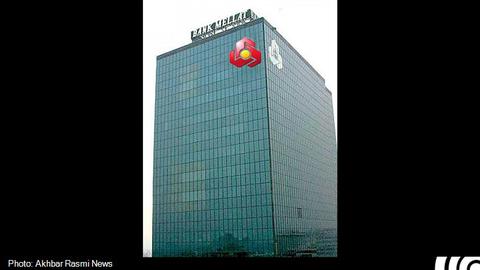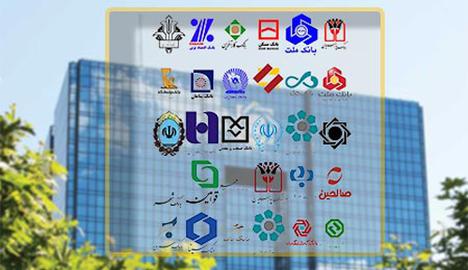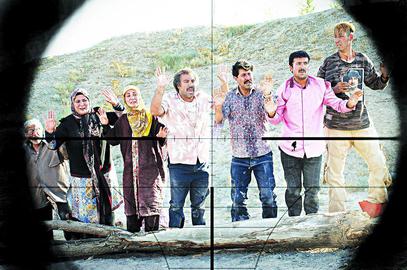A banking crisis has taken hold in Iran, with financial institutions suffering crippling losses and unable to pay the interest on deposits, according to new data released by the country’s largest banks.
Banks trading on the Tehran Stock Exchange have endured operating losses of 17 trillion tomans, or close to $4.5 billion, a situation that has worsened year on year and looks set to continue.
Iran’s 10 biggest banks — Tejarat, Saderat, Mellat, Parsian, Sarmayeh, Eghtesad-e Novin, Gardeshgari, Dey, Ghavamin and Iran Zamin — have revealed the extent of the crisis. In particular, operating losses for Mellat and Saderat banks increase on a daily basis. According to a Bank Mellat statement published on the Comprehensive Database Of All Listed Companies (Codal), an information system run by Iran’s Security and Exchange Organization, the main reason for the crisis is the absence of “an appropriate market for the sale of its assets.”
For some time now, Iran’s Central Bank has been hoping that Iranian banks could help cure some of the ills besetting the financial industry by selling off assets, but in reality, there is simply no market to support such a plan.
Shareholders Pay the Price
The information recently supplied to Codal by Tejarat and Saderat reveals that the two banks have lost a total of three billion dollars, in almost equal amounts, although Tejarat has lost slightly more. According to the newspaper Hamshahri, this is the biggest loss in the history of Tehran’s stock market. And it will be the shareholders who will pay the price.
Figures show that Bank Tejarat’s loss amounts to two and a half times the total value of its shares. For Bank Saderat, the amount is over two times the value of its shares. In other words, even if all the shares of these banks were to be sold, the sale would not even come close to compensating for all accumulated losses.
Iran’s eight other major banks are not doing any better. According to the latest information available on Codal, the losses for these banks are as follows:
- Mellat, 143 billion tomans, close to $38 million
- Parsian, 350 billion tomans, over $92 million
- Eghtesad-e Novin, 575 billion tomans, close to $151 million
- Iran Zamin, 298 billion tomans, over $78 million
- Sarmayeh, 688 billion tomans, close to $182 million, as of latest available data, published in March 2016
- Dey, 1.403 trillion tomans, over $370 million, according to the latest report published in March 2017
- Gardeshgari, 86 billion tomans, close to $23 million
- Ghavamin, 8 billion tomans, over $2 million
No recent information is available for Bank Pasargad. For the last three years the bank has failed to provide its shareholders with transparent financial statements.
Two Years of Transparency
The publication of banks’ financial statements began two years ago when the Central Bank, in it its role as the regulating agency, took steps toward becoming transparent. According to the parliament’s Research Center, following this move, the bank’s losses began to become evident.
In March 2017, the news agency Nasim Online reported that six banks — Saderat, Tejarat, Mellat, Parsian, Eghtesad-e Novin and Sarmayeh — had accumulated a loss of at least 9 trillion tomans, or close to $2.4 billion. According to it, Bank Saderat had accumulated a loss equal to 108 percent of its capital.
In late 2016, Fars News Agency published the outcome of a review it had conducted in 2015 looking at the performance of 18 banks. Of the 18, five banks had lost money and nine others saw their profits fall.
Evidently, the banking crisis in Iran is getting worse day by day. Several financial experts believe that the losses will continue to pick up throughout the coming year. However, the banking crisis is only one indicator of an overall crisis that reaches across every economic sector in the country — a crisis the government has been largely unsuccessful in controlling. And the constant political and ideological upsets and rivalries, coupled with the continued influence that hidden players command over the economy, only make the dire situation worse.
More on Iran’s economy:
Economic Uncertainty as Iranians Celebrate Norooz, March 2018
Is Iran Becoming More Corrupt?, March 2018
Budgets Compared: Rouhani vs. Ahmadinejad, February 2018
Unemployment and Inflation are an Explosive Mix, January 2018
The Economic Despair Behind Iran’s Protests, January 2018
Iranians Are 15% Poorer than a Decade Ago, January 2018
Looming Disaster for Pension Funds in Iran?, January 2018
More than 40% of Iranian Households Live Below the Poverty Line, October 2017
visit the accountability section
In this section of Iran Wire, you can contact the officials and launch your campaign for various problems



























comments
Clerics are not very good at banking either